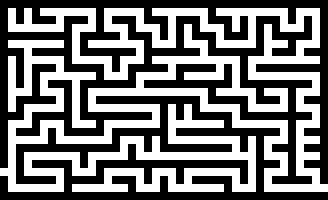http://journal.stuffwithstuff.com/2014/12/21/rooms-and-mazes/
I read this article about dungeon and maze generation. The author uses a kind of specialized algorithm for generating 'perfect' mazes that have walls of non-zero thickness.
(Edit: I misunderstood the term 'perfect' here. It actually means there are no loops in the maze)
As I understand, typical maze algorithms work for walls of zero thickness but this is not what I want.
He posted his code in the article, but after a cursory glance, I think I need someone to explain the procedure (or a similar one) in plain english.
My first two attempts looked like:
Which produces an effect with the diagonals that are unsightly.
and then:
Which is better but its not 'perfect' in the sense that it seems to waste some space.
If someone can give me simple english instructions I might post the python code after I get it working.





